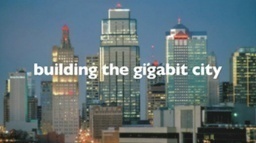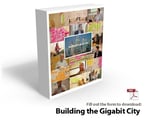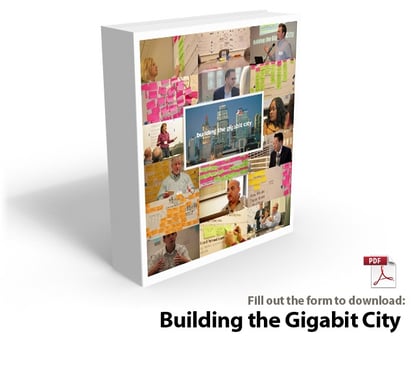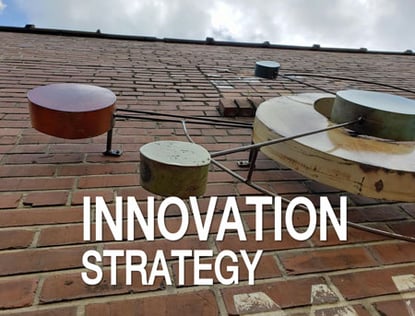 Recently, venture capitalist and senior Kauffman fellow, Paul Kedrosky, gave the last of four scheduled presentations at the Kauffman Foundation relating to Google Fiber. He concentrated on what Kansas City should do to make sure it—and the U.S.—gets the most out of the Google Fiber innovation opportunity. Here are four specific lessons on Google Fiber innovation from Paul Kedrosky that likely apply to our organizations as we strive for greater innovation.
Recently, venture capitalist and senior Kauffman fellow, Paul Kedrosky, gave the last of four scheduled presentations at the Kauffman Foundation relating to Google Fiber. He concentrated on what Kansas City should do to make sure it—and the U.S.—gets the most out of the Google Fiber innovation opportunity. Here are four specific lessons on Google Fiber innovation from Paul Kedrosky that likely apply to our organizations as we strive for greater innovation.
1. Co-location
Kedrosky said some applications are not appropriate for development in Kansas City. Development must take place close to where they will eventually be used because even with extremely fast internet connects, execution or feedback will not be fast enough. The reason for this may be physical (in the case of stock trading, the speed of light is the limitation) or they may be sociological or cultural.
The lesson: Make sure that functions in your organization requiring nearly immediate feedback are in proximity—in terms of both physical location and where they fit in the hierarchy. Think sales and marketing, or production and engineering as examples where co-location is critical.
2. Upload/download symmetry
No matter how fast you can download information, it really does not matter if your upload bandwidth is too narrow. Eventually the download will become “occluded,” that is stopped or slowed because the response (upload) moves too slowly
The lesson: If senior management is not giving fast enough feedback and providing enough information, it makes no difference how much capacity an organization has. The organization will eventually stop what it is doing because it is waiting for senior management direction.
3. Understand the advantage/inevitability of flat-rate pricing
Historically the trend in communications is to flat rate pricing. The same first-class stamp takes your letter across the street or across the country. Likewise, long distance calling is rarely metered anymore. Widespread adoption and use becomes the counterbalance for falling prices.
The lesson: Customers shy away from pricing that involves cognitive complexity and risk. They ask questions such as, “What happens if I go over my limit?” or ”What else might I want to do with this product that I won’t be able to?” Look for ways you can make your pricing model flatter. Think restaurants and buffets. Also, consider making standard the options and add-ons that customers want or need. Price in a way that forgoes some upfront revenue but creates more satisfied customers—who, in turn, are likely to return and buy more.
4. Encourage playful experimentation and waste
Paul Kedrosky believes Kansas City will only make the creative breakthroughs in using Gigabit speed if it actively encourages, even demands, playful experimentation and waste. Indeed the title of his presentation was “Waste Lots, Want Lots.” Waste should come in two forms: waste of bandwidth and waste of latency.
The lesson: Ask these questions: Would you have encouraged (and rewarded) an employee who spent time in the back shop soldering seemingly random circuit boards together? Would you have encouraged (and rewarded) an employee who spent time, lots of time, trying to figure out a more systematic way to meet girls? If the answer is no, then you would have not been in on the founding of either Apple or Facebook. You may say that there are no Steve Jobs or Mark Zuckerberg working for you. You are most likely right, and we could know at least one reason why. –Barrett Sydnor
 How can ultra high-speed internet speeds drive innovation? “Building the Gigabit City: Brainzooming a Google Fiber Roadmap,” a free 120-page report, shares 60 business opportunities for driving innovation and hundreds of ideas for education, healthcare, jobs, community activities, and more. Download this exclusive Google Fiber report sponsored by Social Media Club of Kansas City and The Brainzooming Group addressing how ultra high-speed internet can spur economic development, growth, and improved lifestyles globally.
How can ultra high-speed internet speeds drive innovation? “Building the Gigabit City: Brainzooming a Google Fiber Roadmap,” a free 120-page report, shares 60 business opportunities for driving innovation and hundreds of ideas for education, healthcare, jobs, community activities, and more. Download this exclusive Google Fiber report sponsored by Social Media Club of Kansas City and The Brainzooming Group addressing how ultra high-speed internet can spur economic development, growth, and improved lifestyles globally.



